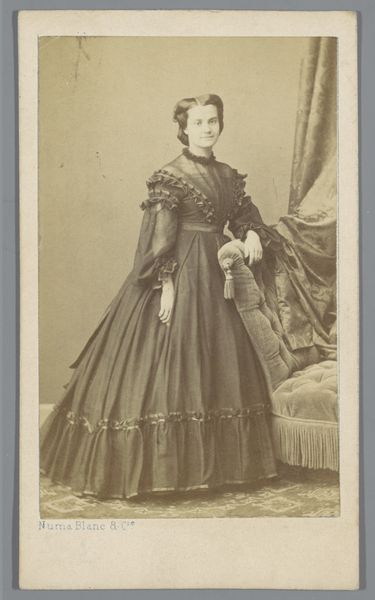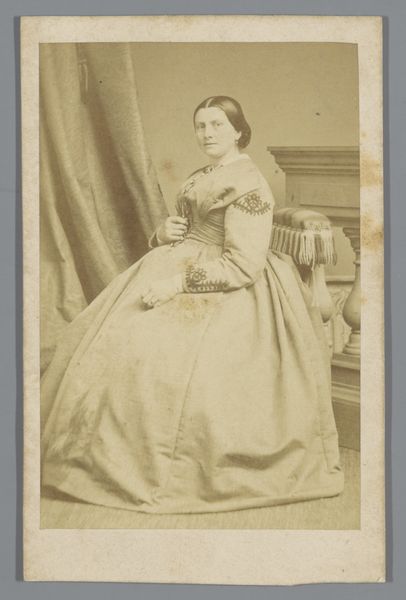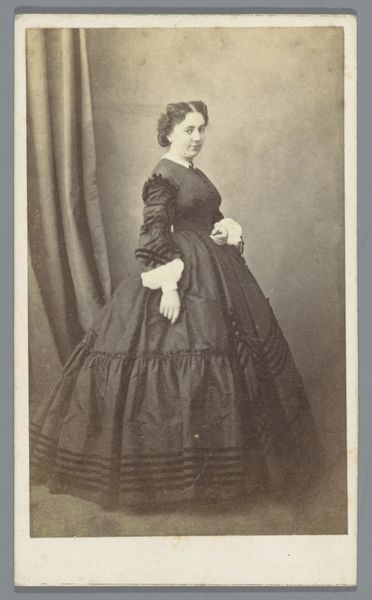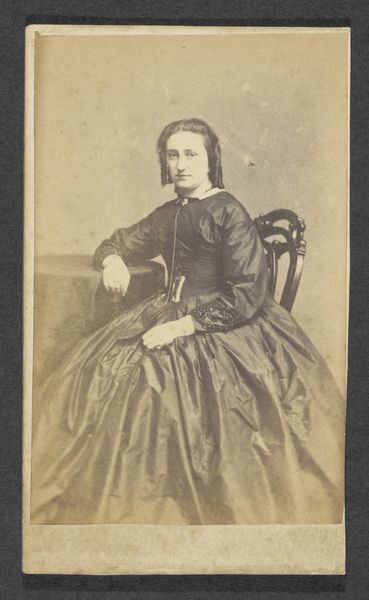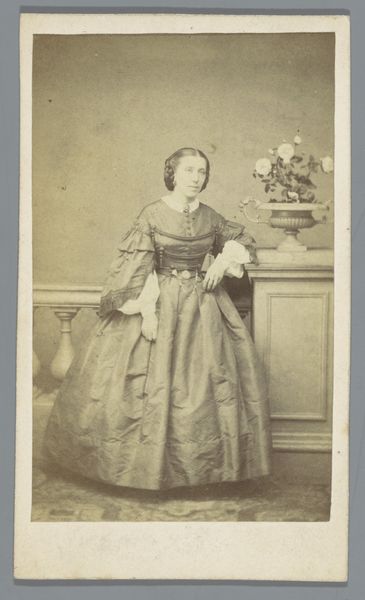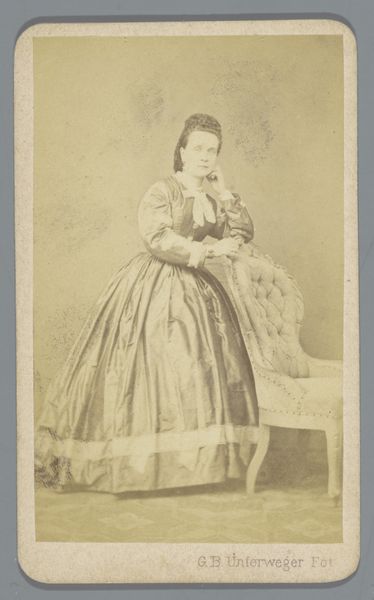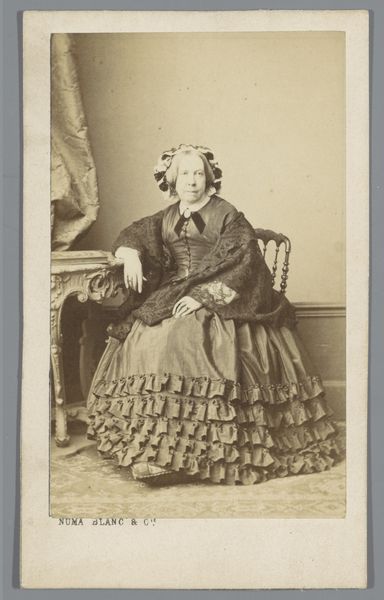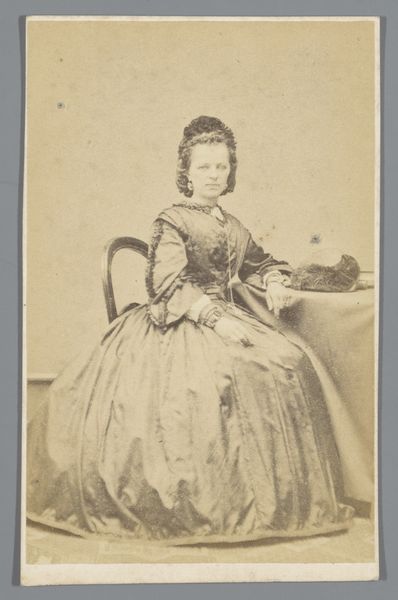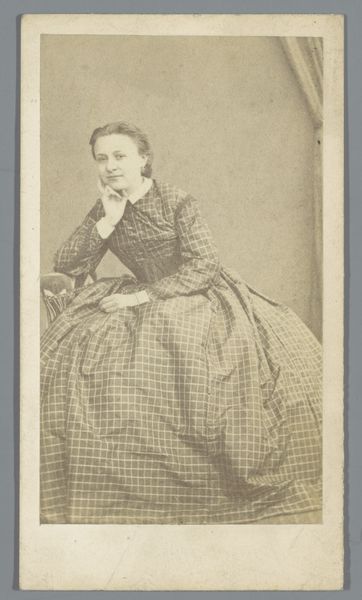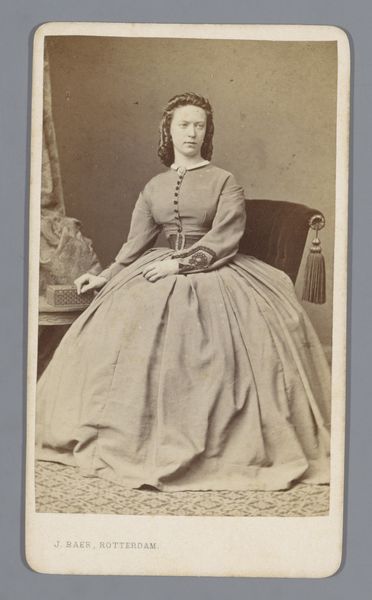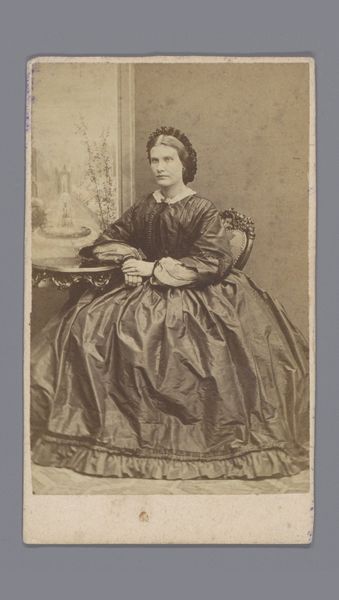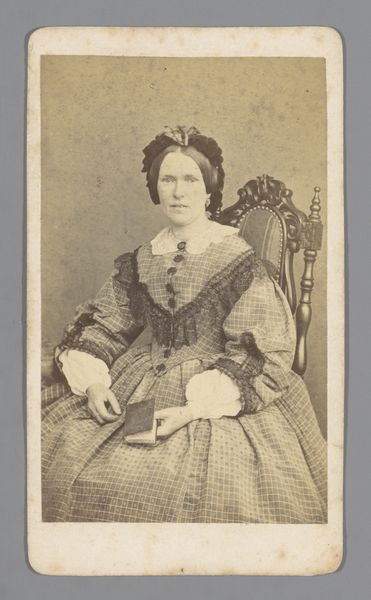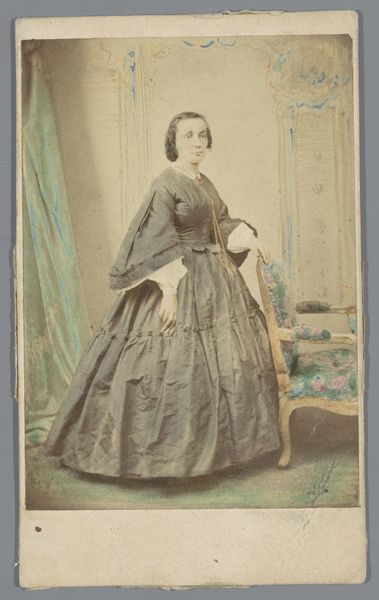
Portret van een onbekende vrouw, zittend aan tafel met een boek in haar handen 1865 - 1875
0:00
0:00
wegnermottu
Rijksmuseum
photography, gelatin-silver-print
#
portrait
#
photography
#
coloured pencil
#
gelatin-silver-print
#
genre-painting
#
realism
Dimensions: length 95 mm, width 63 mm
Copyright: Rijks Museum: Open Domain
Curator: This photograph, housed here at the Rijksmuseum, is titled "Portrait of an Unknown Woman, Sitting at a Table with a Book in her Hands." It was taken sometime between 1865 and 1875 by Wegner & Mottu. What strikes you immediately about it? Editor: It’s that almost palpable stillness. She seems quite composed, but the print itself feels fragile, as if it could crumble at any moment. And the patterned fabric of her dress just dominates. Curator: Absolutely. The gelatin-silver print provides a great depth. Given the period, this portrait raises questions of gender and representation. How was she positioned as a woman of that era, engaging with literature and likely partaking in intellectual pursuits, even in a domestic setting? Editor: Let’s consider the production—this gelatin-silver print represents a significant shift. Photography allowed for a certain democratization of portraiture. The labor involved in the photography itself, the developing, printing, how that labor reflects broader industrial changes... these all would have shaped her ability to possess such a likeness of herself. What are your thoughts on that? Curator: It underscores her class and privilege but also how identity, even then, was becoming more accessible through technology. What are the social constraints, biases or accepted views this woman faced while interacting in such a position with art? The very fact that she is reading—indicative of education at the time– positions her in specific socioeconomic settings. Editor: And thinking about how she chooses to display her literacy… a deliberate act that communicates something about her status and aspirations. The book itself functions as a tool, or as a material prop here, it's really the most essential material here for its implied utility, more so than say, her chair, or table. Curator: Precisely. And even though this woman remains "unknown", the photograph opens a window onto the roles, realities, and quiet struggles experienced during that epoch of profound transformation. Editor: Indeed. Looking through a lens focused on materials gives us another path through which to understand identity, representation and production and what it might communicate about a subject long since departed.
Comments
No comments
Be the first to comment and join the conversation on the ultimate creative platform.
